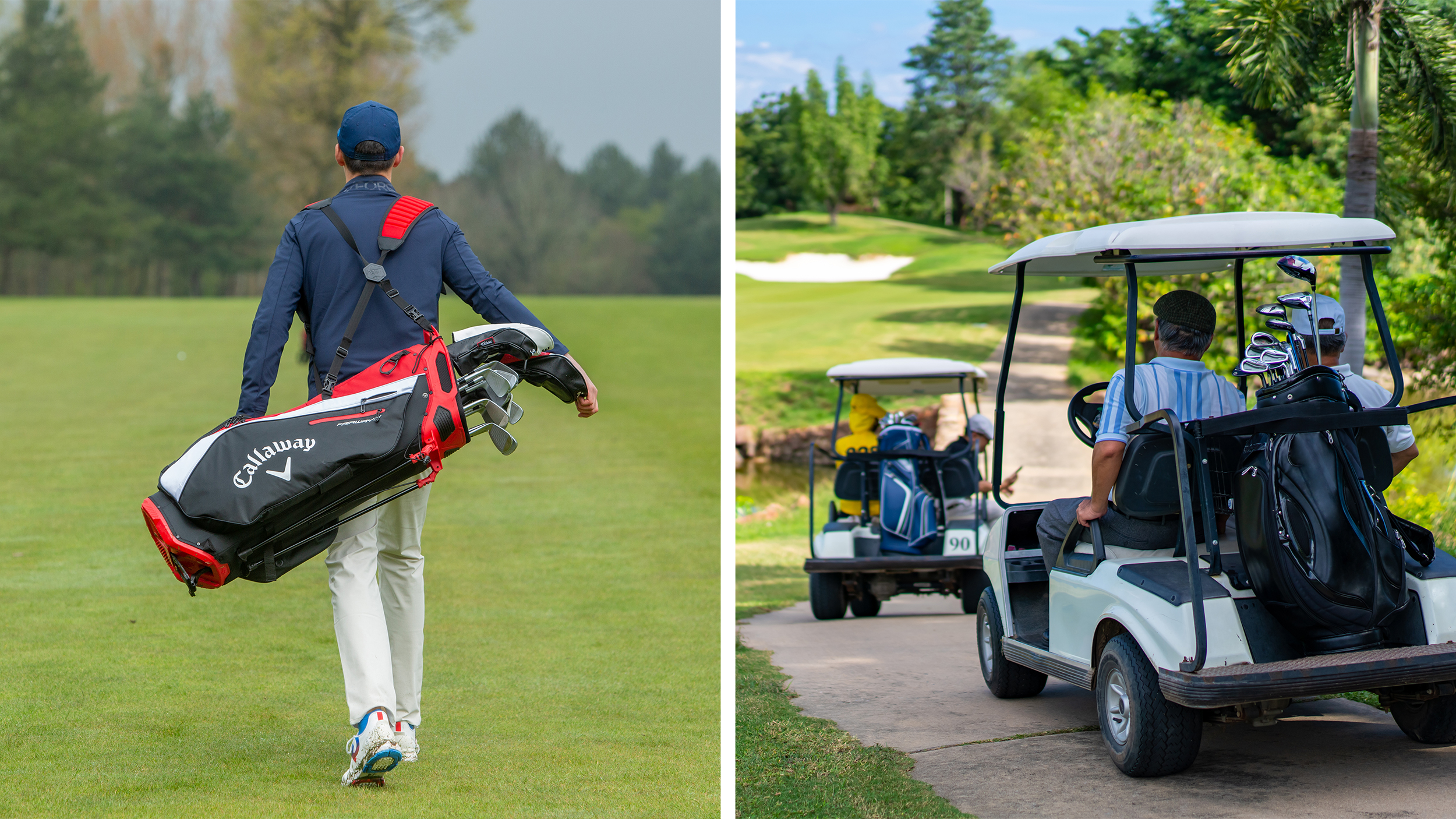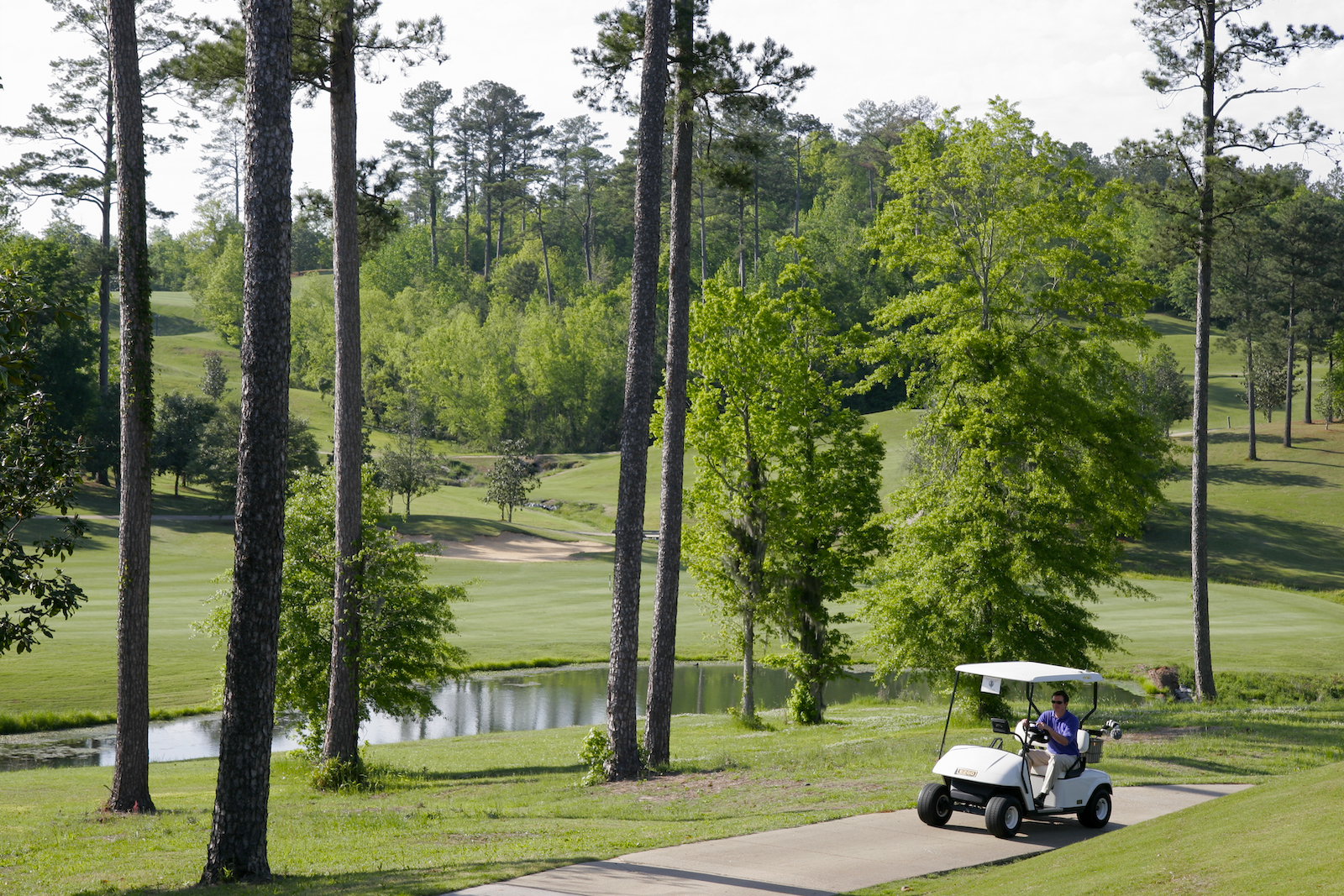5 Reasons You Play Better Without Using A Cart!
While they may sometimes be essential or compulsory, we pick out 5 reasons why you play better without using a cart...


Carts, or buggies, may be more prevalent in certain parts of the world than others, and yes, many golfers will have played a course somewhere where they were eternally grateful for the cart – perhaps in a humid climate, over particularly hilly terrain or on a course layout featuring long treks between greens and tees.
But while the cart may sometimes be more or less essential (even compulsory at some courses), by and large, we reckon you’ll play better golf without using a cart for the following five reasons…
Fitness
For plenty of golfers, golf is their only real exercise so take away the walking element and you’re taking away their main avenue of exercise. Walking has been shown to be good for both physical and mental health.
Clearly, it would be hard to quantify any benefit on a round-by-round basis, but we believe that the more you walk (a typical round will cover about five to seven miles) the fitter you will become over time, and the fitter you become, the more chance you will have or playing better golf more often.
Stay looser
On a related theme, walking will help you stay looser for longer (especially among older golfers and those with dodgy backs) than if you’re constantly sitting back down with your lower back and legs at a 90˚ angle for every buggy ride between shots, particularly on cold days.
Keep the blood pumping as you walk, and you’ll stay looser for longer and give yourself a better chance of playing your best golf right to the end of the round.
As nature intended

Walking gets you closer to nature and gives you more time to think
Walking is how golf was intended to be played, and obviously how it had to be played in its more formative years. Not only do you get to feel the ground beneath your feet and immerse yourself in your surroundings more, but it also gives you more time to think things through mentally, especially after a bad shot.
Subscribe to the Golf Monthly newsletter to stay up to date with all the latest tour news, equipment news, reviews, head-to-heads and buyer’s guides from our team of experienced experts.
In a cart, you’re typically rushing to your ball and then playing again before you’ve really cleared your mind properly and had time to process what just happened. The extra breathing space between shots that walking allows could just help you to avoid compounding error with error when something has just gone a bit wrong.
The direct route
If you’re walking, you can go pretty much wherever you want, taking the most direct route from A to B and thus always having your clubs right there where you need them, especially if you’re carrying.
Any little frustrations can undoubtedly hamper performance and if you’re constantly having to wander from cart path to ball to inspect the lie before going back to choose a club, you are adding a layer of pre-shot hassle that wouldn’t be there if you were walking (especially if you then change your mind on closer inspection of the lie and have to repeat the journey!).
Such frustrations can lead to you hurrying… and hurrying or rushing in golf rarely have good consequences for your game.

Sometimes you may be forced to leave your cart and golf bag some distance from where your ball is lying
Right club more often
Taking this theme a little further, you’ll play better when walking because you’ll hit the right club more often. Why? Well, when ‘stick to the cart path’ rules are in force, you will inevitably face times when your ball is lying about as far from the cart path as humanly possible. In such circumstances, most golfers will take two or three clubs for what could be nearly a 100-yard walk to their ball.
But when they get there, they may find that none of them is the right club for the shot in hand because of the lie, the line or the shot they really need to play.
A great many golfers would then make the decision that they can’t be bothered to trek all the way back to the cart so try to improvise with what they have to hand and make a complete hash of it, leading to higher scores than they would have made with their full bag of clubs right by their side.

Jeremy Ellwood has worked in the golf industry since 1993 and for Golf Monthly since 2002 when he started out as equipment editor. He is now a freelance journalist writing mainly for Golf Monthly. He is an expert on the Rules of Golf having qualified through an R&A course to become a golf referee. He is a senior panelist for Golf Monthly's Top 100 UK & Ireland Course Rankings and has played all of the Top 100 plus 91 of the Next 100, making him well-qualified when it comes to assessing and comparing our premier golf courses. He has now played 1,000 golf courses worldwide in 35 countries, from the humblest of nine-holers in the Scottish Highlands to the very grandest of international golf resorts. He reached the 1,000 mark on his 60th birthday in October 2023 on Vale do Lobo's Ocean course. Put him on a links course anywhere and he will be blissfully content.
Jezz can be contacted via Twitter - @JezzEllwoodGolf
Jeremy is currently playing...
Driver: Ping G425 LST 10.5˚ (draw setting), Mitsubishi Tensei AV Orange 55 S shaft
3 wood: Srixon ZX, EvenFlow Riptide 6.0 S 50g shaft
Hybrid: Ping G425 17˚, Mitsubishi Tensei CK Pro Orange 80 S shaft
Irons 3- to 8-iron: Ping i525, True Temper Dynamic Gold 105 R300 shafts
Irons 9-iron and PW: Honma TWorld TW747Vx, Nippon NS Pro regular shaft
Wedges: Ping Glide 4.0 50˚ and 54˚, 12˚ bounce, True Temper Dynamic Gold 105 R300 shafts
Putter: Kramski HPP 325
Ball: Any premium ball I can find in a charity shop or similar (or out on the course!)